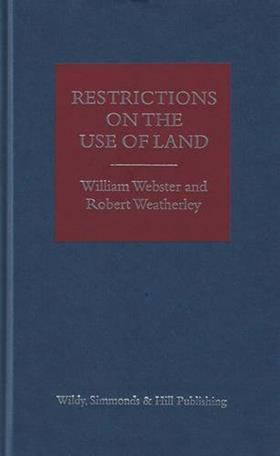This book deals with the practicalities of rights over land and public control of land. It is structured in distinct parts, dealing with: easements and profits a prendre; town and village greens; public rights of way; restrictive covenants; assets of community value; and selected elements of planning law. The chapters are easy to understand and accessible.

Restrictions on the Use of Land
William Webster, Robert Weatherley
£165, Wildy, Simmonds & Hill Publishing
There is, of course, no shortage of books on the law of property and planning, but Webster and Weatherley nicely balance references to legislation and case law with practical explanations. In particular, the section on planning (which is broken down into development
control, appeals and enforcement, the natural environment and listing and conservation areas) provides a welcome home to a collection of materials that may otherwise require reference to multiple textbooks.
Covering such a broad theme as restrictions on the use of land means that the book cannot always go into great detail about each topic. Therefore, it cannot be considered a definitive guide or a ‘one-stop shop’. But it certainly provides a useful starting point for professionals and lay people alike who are on the lookout for a general understanding of a variety of topics.
The clear benefit of a book such as this for practitioners is its ability to offer a wealth of information at your fingertips, so that it can be quickly referred to or read in detail, depending on need. It is a handy signpost for legislation and case law, so that users can go on to explore topics in more detail if required.
A useful final chapter on upcoming changes and the shifting legal landscape means that supplements and further editions are sure to follow.
Kate James is a planning solicitor at TLT































No comments yet